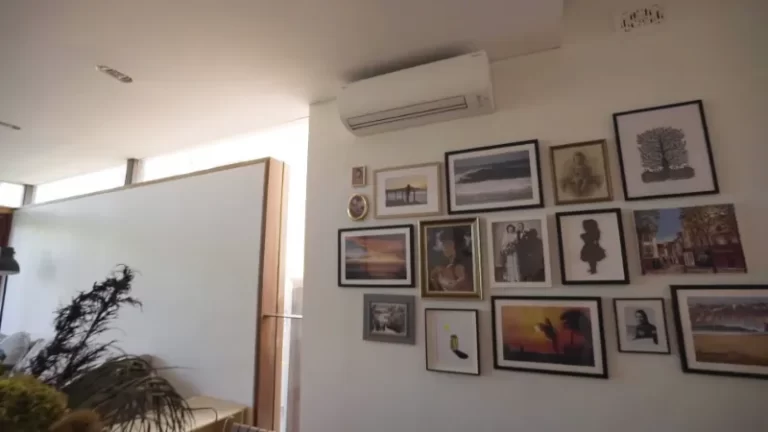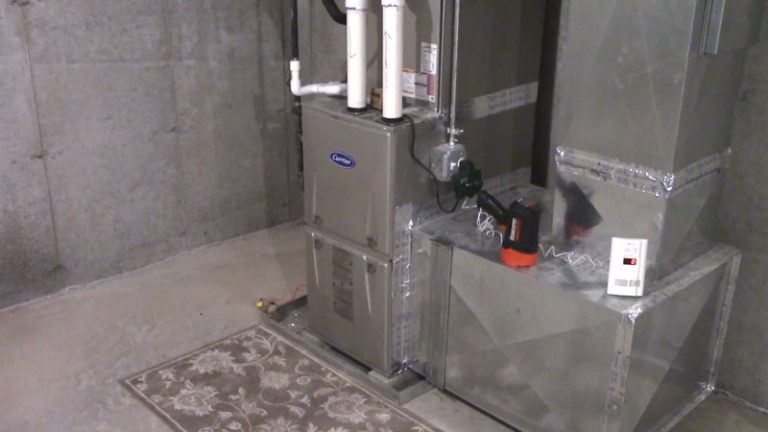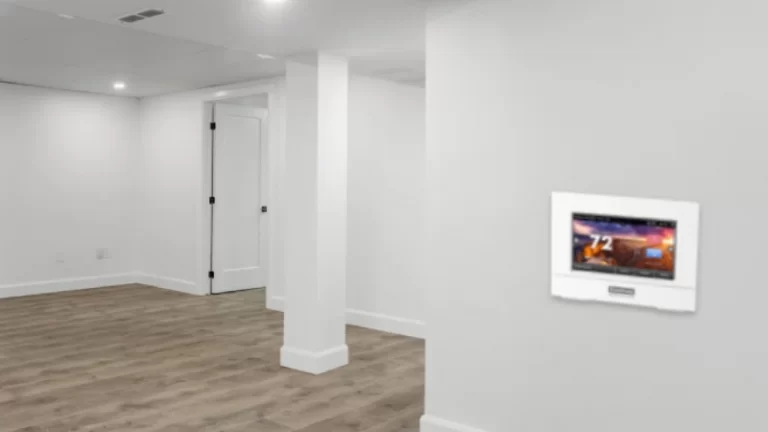Daewoo Refrigerator Problems and Solutions
Daewoo refrigerators are a popular choice for many households due to their stylish design and dependable performance. However, even the most well-made appliances can encounter problems from time to time.
In order to maintain the efficiency of your Daewoo refrigerator and keep your food fresh, it’s important to address any issues that arise promptly. In this blog, we will explore 5 to 10 common problems that Daewoo refrigerator owners may experience and provide step-by-step guidance for fixing them.
You'll Learn About
Daewoo Refrigerator Problems and Solutions
Daewoo refrigerators can face several problems that cause it to not cool properly. Some common issues include a faulty evaporator fan motor, condenser fan motor, condenser coils, start relay, and start capacitor.
To troubleshoot these problems, the user can check each part and replace it if needed. For instance, the user can turn the blades of the evaporator fan motor manually to see if it’s working. If the blades don’t turn, the motor needs to be replaced.
In addition to these problems, Daewoo fridge-freezers can also face issues such as the temperature being set too low, being placed in direct sunlight or near a heat source, or insufficient space between the fridge and the wall. To avoid these problems, the user can ensure that the temperature is set correctly, the fridge is not in direct sunlight or near a heat source, and there is enough space between the fridge and the wall.
Daewoo Service Center provides repairs and services for Daewoo home appliances, including refrigerators. They offer repair services for Daewoo fridges and have a contact number for customers to reach out to. There is also a troubleshooting guide available online to help users diagnose and fix common problems with their Daewoo fridges and freezers.
Problem #1: Evaporator Fan Motor Not Working
The evaporator fan motor is an important component in a refrigerator as it helps circulate the cool air from the evaporator coils throughout the appliance. It is located in the freezer compartment and runs constantly to maintain the desired temperature.
Symptoms of a Faulty Evaporator Fan Motor
When the evaporator fan motor stops working, the following symptoms may occur:
- The freezer temperature rises
- Ice builds up on the evaporator coils
- The food in the freezer begins to defrost
- The refrigerator makes a loud noise when the motor is running
How to Diagnose and Fix the Problem
To diagnose a faulty evaporator fan motor, follow these steps:
- Check the fan blades: If the fan blades are stuck or won’t turn, the motor is likely faulty and needs to be replaced.
- Test the motor: Using a multimeter, test the motor for continuity. If there is no continuity, the motor is bad and needs to be replaced.
If the problem is found to be with the evaporator fan motor, it’s important to replace it as soon as possible to prevent further damage to the refrigerator. It’s recommended to consult a professional technician or the manufacturer’s guidelines for the proper replacement procedure.
a faulty evaporator fan motor can have significant consequences on the performance of your Daewoo refrigerator. By being aware of the symptoms and following the steps to diagnose the problem, you can ensure that your appliance is functioning properly and keeping your food fresh.
Problem #2: Condenser Fan Motor Not Working
The condenser fan motor is an important component of your Daewoo refrigerator, responsible for circulating air through the condenser coils. The condenser coils are located at the back of the refrigerator and they help to dissipate heat generated during the refrigeration process. The fan motor helps to keep the coils cool and allows the refrigerant to condense back into a liquid.
Symptoms of a Faulty Condenser Fan Motor
When the condenser fan motor fails, you will notice several symptoms, including:
- Noisy operation: If you hear a loud or unusual noise coming from the back of the refrigerator, it could indicate a problem with the fan motor.
- Overheating: If the fan motor is not working, the condenser coils will become overheated, which could lead to decreased cooling efficiency and even damage to other components of the refrigerator.
- Warm food: If the condenser fan motor is not working, the refrigerator may not be able to maintain the proper temperature, which can result in warm food and drinks.
How to Diagnose and Fix the Problem
To diagnose a faulty condenser fan motor, follow these steps:
- Check the fan blades: If the fan blades are clogged with dust or debris, they won’t be able to move air effectively, causing the fan motor to fail. Clean the blades and see if the problem persists.
- Test the fan motor: To test the fan motor, disconnect power to the refrigerator and use a multimeter to check for continuity between the two leads. If there is no continuity, the fan motor is faulty and needs to be replaced.
- Check the wiring: If the fan motor is getting power, but it’s not working, it could be due to a problem with the wiring. Inspect the wiring for any signs of damage or wear, and repair or replace it as necessary.
If you’re not comfortable diagnosing and fixing the problem yourself, it’s best to call a professional for help. Repairing a faulty condenser fan motor can be complex and requires specialized tools and knowledge.
Problem #3: Dirty Condenser Coils
The condenser coils in a Daewoo refrigerator play a crucial role in the cooling process. They are responsible for dissipating the heat absorbed from the inside of the refrigerator to the outside environment. The coils are usually located at the back or bottom of the refrigerator, and they are designed to transfer heat by circulating refrigerant through them.

Symptoms of Dirty Condenser Coils
Dirty condenser coils can affect the performance of a Daewoo refrigerator and lead to a number of problems. Some of the symptoms of dirty condenser coils include:
- The refrigerator is not cooling properly, and food is not staying fresh for as long as it should
- The compressor is running constantly, and the refrigerator is making more noise than usual
- The temperature inside the refrigerator is not consistent, and some parts of the refrigerator are warmer than others
- The energy consumption of the refrigerator is higher than normal, leading to higher electricity bills
How to Clean the Condenser Coils
Cleaning the condenser coils of a Daewoo refrigerator is a relatively simple process that can be done at home. Here’s how to do it:
Unplug the Refrigerator
Before you start cleaning the condenser coils, make sure to unplug the refrigerator from the power source.
Locate the Condenser Coils
The condenser coils are usually located at the back or bottom of the refrigerator. Check the owner’s manual or the manufacturer’s website for more information on their location.
Vacuum the Coils
Use a brush attachment or crevice tool on your vacuum cleaner to clean the coils. Make sure to vacuum the coils thoroughly, removing any dust, debris, or pet hair.
Clean With a Coil Cleaner
You can also use a commercial condenser coil cleaner to clean the coils. Simply spray the cleaner on the coils and let it sit for 10-15 minutes, then rinse the coils with water and let them air dry.
Reassemble the refrigerator
After the condenser coils are clean and dry, reassemble the refrigerator and plug it back in.
By following these steps, you can clean the condenser coils of your Daewoo refrigerator and ensure that it is working efficiently.
Problem #4: Faulty Start Relay
The start relay is a crucial component in a refrigerator’s compressor circuit. It acts as a switch that controls the flow of power to the compressor. The start relay helps the compressor to start and run smoothly by controlling the amount of electrical current that is sent to the compressor motor.
Symptoms of a Faulty Start Relay
If the start relay is faulty, the refrigerator will not be able to start the compressor. Some common symptoms of a faulty start relay include:
- The refrigerator doesn’t run at all
- The compressor tries to start, but it doesn’t run for more than a few seconds
- The refrigerator is making a buzzing or clicking sound
- The refrigerator is not cooling
How to Diagnose and Fix the Problem
To diagnose a faulty start relay, you need to check for continuity between the start and run terminals of the relay. If there is no continuity, the relay is faulty and needs to be replaced.
Here are the steps to replace a faulty start relay:
- Locate the start relay. It is usually located near the compressor or in the control panel.
- Unplug the refrigerator.
- Remove the screws that hold the relay in place.
- Disconnect the wiring harness from the old relay.
- Connect the wiring harness to the new relay.
- Replace the screws to secure the new relay in place.
- Plug the refrigerator back in.
If you are not familiar with electrical appliances, it’s recommended that you call a professional to diagnose and fix the problem. Replacing a start relay requires some technical knowledge and experience, and if done incorrectly, it can lead to further problems.
if your Daewoo refrigerator is not running or cooling, one of the possible causes could be a faulty start relay. By checking for continuity between the start and run terminals and replacing the faulty relay, you can get your refrigerator running smoothly again.
Problem #5: Defective Start Capacitor
The start capacitor is a component of the refrigerator’s compressor motor that helps it get started. It temporarily stores energy and releases it as a boost to help the motor overcome the initial resistance and get up to speed. This component is crucial for the proper functioning of the refrigerator, and if it fails, the refrigerator will not run.
Symptoms of a Faulty Start Capacitor
If the start capacitor is faulty, it will not be able to provide the necessary energy boost to the motor, causing the motor to struggle or not start at all. This can result in the following symptoms:
- Refrigerator not cooling: If the compressor motor is not running, the refrigerant will not circulate, and the refrigerator will not cool.
- Noisy compressor: A struggling or failing compressor motor can make a loud noise as it tries to start.
- Refrigerator runs continuously: If the start capacitor is faulty and the compressor struggles to start, it can cause the refrigerator to run continuously without shutting off, leading to higher energy bills.
How to Diagnose and Fix the Problem
To diagnose a defective start capacitor, you will need to check the voltage and continuity of the capacitor with a multimeter. If you find that the start capacitor is defective, it will need to be replaced. This is a job that should be performed by a professional technician, as it involves working with electrical components and refrigerants.
a faulty start capacitor can cause significant problems with the performance of a Daewoo refrigerator. If you suspect that your refrigerator’s start capacitor is defective, it’s important to have it checked and repaired promptly to avoid further problems and keep your refrigerator running smoothly.
Problem #6: Temperature Not Set Correctly
The temperature settings of a refrigerator play a crucial role in its functioning. If the temperature is not set correctly, it can result in either food getting spoiled due to warm temperatures or freezer items not freezing properly. The temperature controls are usually located on the control panel of the refrigerator.
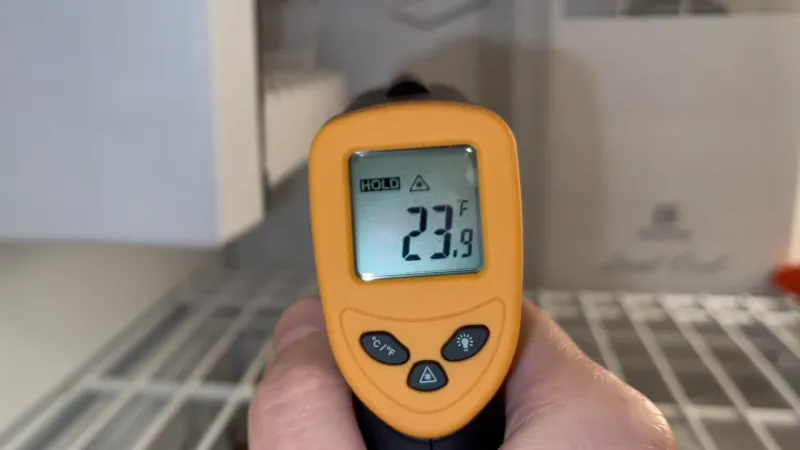
Symptoms of Incorrect Temperature Setting
If the temperature is not set correctly, it can cause several issues. For instance, if the temperature is set too high, it can result in food getting spoiled quickly or the freezer items not being frozen properly. If the temperature is too low, it can result in the refrigeration unit working too hard and consuming more energy than required.
Adjusting the Temperature Correctly
To adjust the temperature correctly, follow these steps:
- Locate the temperature control on the control panel.
- Check the current temperature setting.
- Increase or decrease the temperature setting based on your needs.
- Wait for about an hour to see if the temperature has stabilized.
- Repeat the process if required.
It’s important to regularly check the temperature settings and adjust them if required to ensure that your refrigerator is functioning optimally. If you are unable to adjust the temperature correctly, it is best to seek professional assistance.
Problem #7: Placement Near a Heat Source
Refrigerators need to be placed in a location that is free from heat sources to maintain their efficiency. Placing a refrigerator near a heat source such as a stove, oven, or radiator will put a strain on the refrigerator’s cooling system and make it work harder than it needs to. This can result in higher energy bills and reduced lifespan of the refrigerator.
Symptoms of the Problem
If your refrigerator is placed near a heat source, you may notice that it struggles to maintain a constant temperature, and the interior of the refrigerator is warmer than it should be. You may also notice that the refrigerator runs for longer periods of time or more frequently than normal.
How to Avoid Placement Near Heat Sources
To avoid the problems associated with placement near heat sources, it is important to choose a location for your refrigerator that is away from direct sunlight, appliances that generate heat, and other sources of heat. Make sure there is sufficient space around the refrigerator for air to circulate freely, and avoid placing the refrigerator against a wall or in a corner that blocks airflow. If your refrigerator is already placed near a heat source, consider relocating it to a cooler location to help extend its lifespan and improve its performance.
Problem #8: Insufficient Space Between the Fridge and the Wall
One of the most important aspects of ensuring that your Daewoo refrigerator operates at its best is to ensure that it has sufficient space between the fridge and the wall. This is crucial because it allows for proper ventilation, which helps keep the refrigeration system cool and prevents it from overheating. Overheating can cause damage to the compressor and other important parts, which can lead to serious problems with your fridge’s performance.
Symptoms of the Problem
There are a few telltale signs that your Daewoo refrigerator doesn’t have enough space between the fridge and the wall. For example, you may notice that the exterior of the fridge is hot to the touch, even when the internal temperature is well below room temperature.
Additionally, you may notice that your fridge is running constantly or that the temperature inside is inconsistent. These are all signs that your fridge is overheating and that there is not enough ventilation to prevent this from happening.
How to Ensure Sufficient Space Between the Fridge and the Wall
Ensuring that your Daewoo fridge has sufficient space between it and the wall is relatively simple. The first step is to measure the distance between the fridge and the wall, and make sure that it is at least two inches.
If the distance is less than this, you should move the fridge away from the wall so that there is more room for ventilation. Additionally, you should also make sure that there is nothing blocking the air vents at the back of the fridge, as this can also prevent proper ventilation and lead to overheating.
Problem #9: Leaking Water
Water leakage from a refrigerator is a common issue that can be caused by various factors, such as a clogged drain, a damaged water line, or a malfunctioning defrost system. These issues can cause water to accumulate and eventually overflow, leading to leakage.
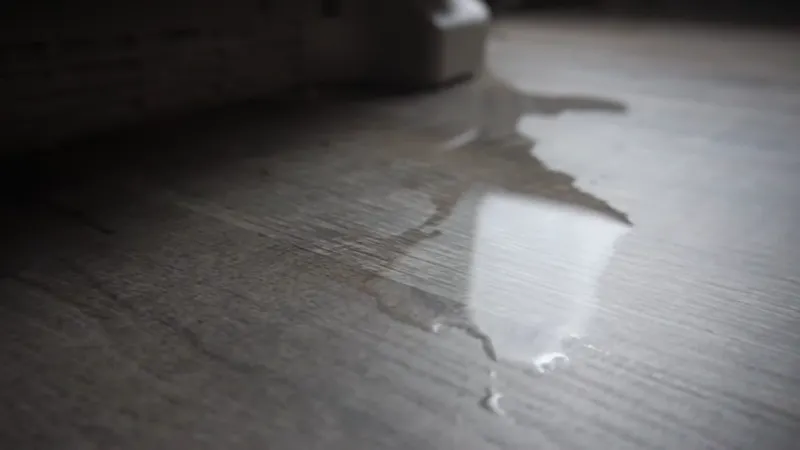
Symptoms of the Problem
The signs of water leakage from a refrigerator are quite obvious and easy to detect. Some of the symptoms include water puddles on the floor, water stains on the interior or exterior of the fridge, and a musty or damp smell coming from the refrigerator.
How to Fix Water Leakage Problems
If you suspect that your Daewoo refrigerator is leaking water, the first step is to identify the cause of the problem. If the drain is clogged, you can try cleaning it out with hot water and vinegar. If the water line is damaged, you may need to replace it.
If the defrost system is malfunctioning, you may need to call in a professional to repair or replace it.
In any case, it is important to address water leakage problems as soon as possible, as they can lead to mold growth and other issues if left unchecked. If you are not confident in your ability to fix the problem yourself, it is best to call in a professional to ensure that the issue is resolved properly.
Problem #10: Strange Noises
Refrigerators are typically quiet appliances, so any strange noises coming from your Daewoo refrigerator can be cause for concern. Common sources of strange noises in refrigerators include:
- Loose or worn out fan blades
- Loose parts within the refrigerator
- A malfunctioning compressor or condenser fan
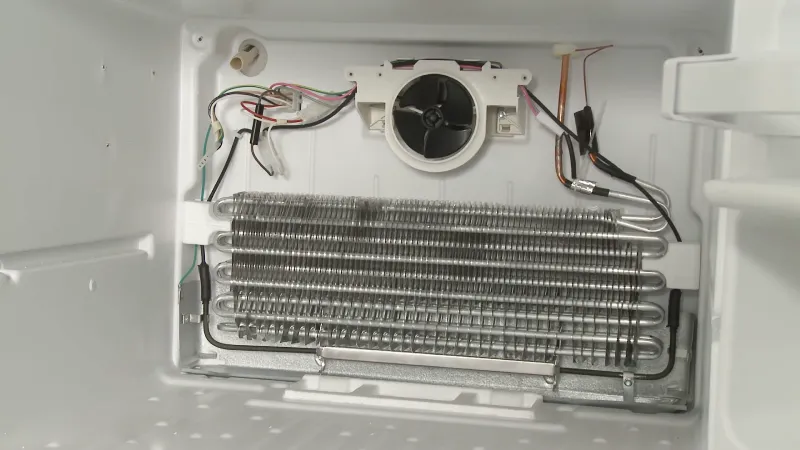
Symptoms of the Problem
If you notice any unusual noises coming from your Daewoo refrigerator, it’s important to take notice. Some common symptoms include:
- Rattling or clanging noises
- Buzzing or humming sounds
- Grinding or whining noises
How to Diagnose and Fix the Problem
Diagnosing the source of strange noises in your Daewoo refrigerator can be a bit challenging, but it’s important to determine the cause in order to fix the problem. Here are some steps you can take:
- Listen carefully to determine the source of the noise. Is it coming from the fan blades, the compressor, or somewhere else?
- Check for loose parts or components within the refrigerator. This might include fan blades, shelves, or drawers.
- If the noise is coming from the compressor or condenser fan, it’s best to call in a professional to diagnose and repair the issue.
Fixing strange noises in your Daewoo refrigerator can be a simple or complex task, depending on the source of the noise. However, by taking the time to diagnose and repair the problem, you can ensure that your refrigerator is running smoothly and efficiently for years to come.
Problem 11: Temperature Regulation
Explanation of the Problem
One of the most common problems faced by Daewoo refrigerator owners is temperature regulation. If the temperature inside the refrigerator is not set correctly, the food will not be stored properly, leading to spoilage and waste. This can be due to a variety of factors, including incorrect temperature settings, a faulty thermostat, or a malfunctioning compressor.
How to Troubleshoot the Issue
To troubleshoot this issue, the first step is to check the temperature control knob and ensure that it is set to the correct temperature. If the knob is set correctly, but the temperature inside the refrigerator is still not correct, the problem may be with the thermostat or the compressor. In this case, it is important to seek the assistance of a professional.
Possible Solutions
Check the Temperature Control Knob
Ensure that the knob is set to the correct temperature. If it is not, adjust it accordingly.
Check the Thermostat
If the knob is set correctly, but the temperature inside the refrigerator is still not correct, the problem may be with the thermostat. In this case, it is best to seek the assistance of a professional.
Check the Compressor
If the thermostat is functioning properly, the problem may be with the compressor. In this case, it is best to seek the assistance of a professional.
if you are experiencing temperature regulation problems with your Daewoo refrigerator, it is important to take the steps outlined above to troubleshoot the issue. If you are unable to solve the problem on your own, it is best to seek the assistance of a professional to ensure that your refrigerator is functioning properly and your food is stored at the correct temperature.
Proper maintenance and timely repairs can help extend the life of your Daewoo refrigerator and ensure its optimal performance.
Problem 12: Appliance Not Working
Explanation of the Problem
Another common problem faced by Daewoo refrigerator owners is when the appliance simply doesn’t work. This can be due to a number of factors, including a power outage, a blown fuse, or a loose mains plug.
How to Troubleshoot the Issue
To troubleshoot this issue, the first step is to check if the mains plug is inserted properly and if the outlet is working. If the plug is loose or the outlet is not working, this will prevent the appliance from functioning. In this case, simply inserting the plug properly or finding a functioning outlet will resolve the issue.
Possible Solutions
Check the Mains Plug
Ensure that the mains plug is inserted properly and that the outlet is functioning. If the plug is loose or the outlet is not working, this will prevent the appliance from functioning.
Check the Fuse
If the outlet is functioning and the mains plug is inserted properly, the problem may be with the fuse. Check the fuse and replace it if it has blown or is defective.
Check the Power Supply
If the fuse is functioning properly and the mains plug is inserted properly, the problem may be with the power supply. In this case, it is best to seek the assistance of a professional.
if you are experiencing problems with your Daewoo refrigerator not working, it is important to take the steps outlined above to troubleshoot the issue. If you are unable to solve the problem on your own, it is best to seek the assistance of a professional to ensure that your refrigerator is functioning properly and your food is stored at the correct temperature.
Proper maintenance and timely repairs can help extend the life of your Daewoo refrigerator and ensure its optimal performance.
Problem 13: Mains Plug Not Plugged in or Loose
Explanation of the Problem
A common problem faced by Daewoo refrigerator owners is when the mains plug is not plugged in properly or is loose, causing the appliance to not function. This can be due to a variety of reasons, such as movement of the refrigerator or someone accidentally bumping into the plug.
How to Troubleshoot the Issue
To troubleshoot this issue, the first step is to check if the mains plug is inserted properly into the outlet. If it is not, simply insert the plug properly to resolve the issue. If the plug is loose, check to see if the outlet is functioning properly and if the plug is loose in the outlet.
If it is, try adjusting the plug to ensure a proper connection.
Possible Solutions
Insert the mains plug properly: If the mains plug is not plugged in properly, simply insert it properly to resolve the issue.
Adjust the mains plug: If the mains plug is loose in the outlet, try adjusting it to ensure a proper connection.
Check the Outlet: If the plug is loose in the outlet, ensure that the outlet is functioning properly. If it is not, try using a different outlet.
Problem 4: Blown or Defective Fuse
Explanation of the Problem
Another common problem faced by Daewoo refrigerator owners is when the fuse has blown or is defective, causing the appliance to not function. This can be due to a variety of reasons, such as a power surge or a malfunction in the refrigerator’s electrical system.
How to Troubleshoot the Issue
To troubleshoot this issue, the first step is to locate the fuse in the refrigerator’s electrical system. This is usually found near the mains plug or on the back of the appliance. Once you have located the fuse, check to see if it has blown.
If it has, replace the fuse with a new one of the same amperage and voltage rating.
Possible Solutions
Replace the fuse: If the fuse has blown, replace it with a new one of the same amperage and voltage rating.
Check for a Power Surge: If the fuse has blown, it is possible that there was a power surge that caused the fuse to blow. Check your home’s electrical system to ensure that there are no issues.
Have a professional inspect the appliance: If you are unable to determine the cause of the blown fuse, it is best to seek the assistance of a professional to ensure that the problem is properly diagnosed and repaired.
If you are experiencing problems with your Daewoo refrigerator due to a blown or defective fuse, it is important to take the steps outlined above to troubleshoot the issue. Proper maintenance and timely repairs can help extend the life of your Daewoo refrigerator and ensure its optimal performance.
If you are unable to solve the problem on your own, it is best to seek the assistance of a professional to ensure that your refrigerator is functioning properly and your food is stored at the correct temperature.
Conclusion
Daewoo refrigerators, like any other household appliances, can encounter problems. The most common problems include the evaporator fan motor not working, the condenser fan motor not working, dirty condenser coils, faulty start relay, defective start capacitor, incorrect temperature setting, placement near a heat source, insufficient space between the fridge and the wall, water leakage, and strange noises.
It’s important to diagnose and fix these issues promptly to maintain the efficiency of the refrigerator. Regular maintenance and proper placement can also prevent many of these problems from occurring.
By following the steps outlined in this article, you can keep your Daewoo refrigerator running smoothly for years to come.

